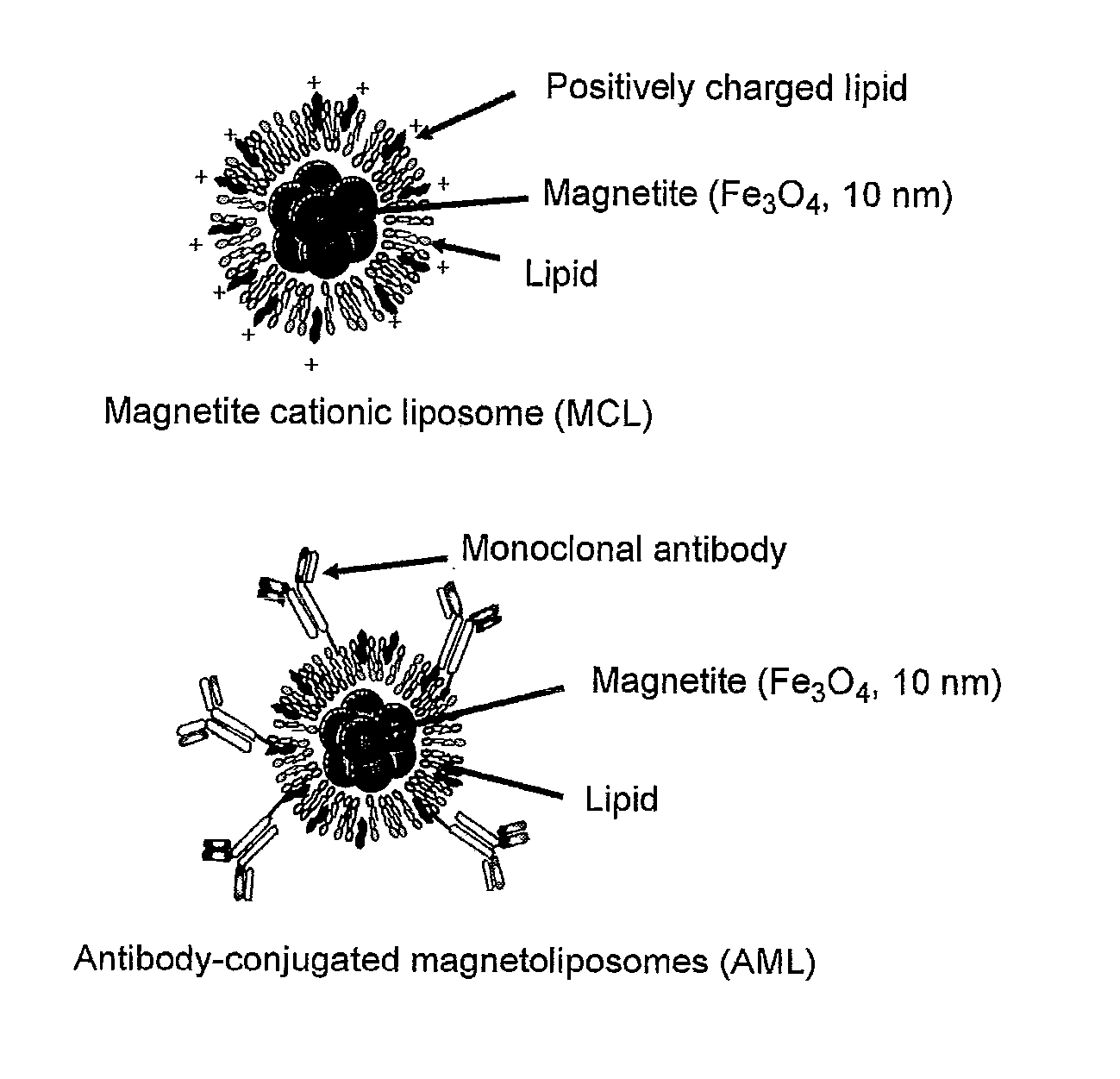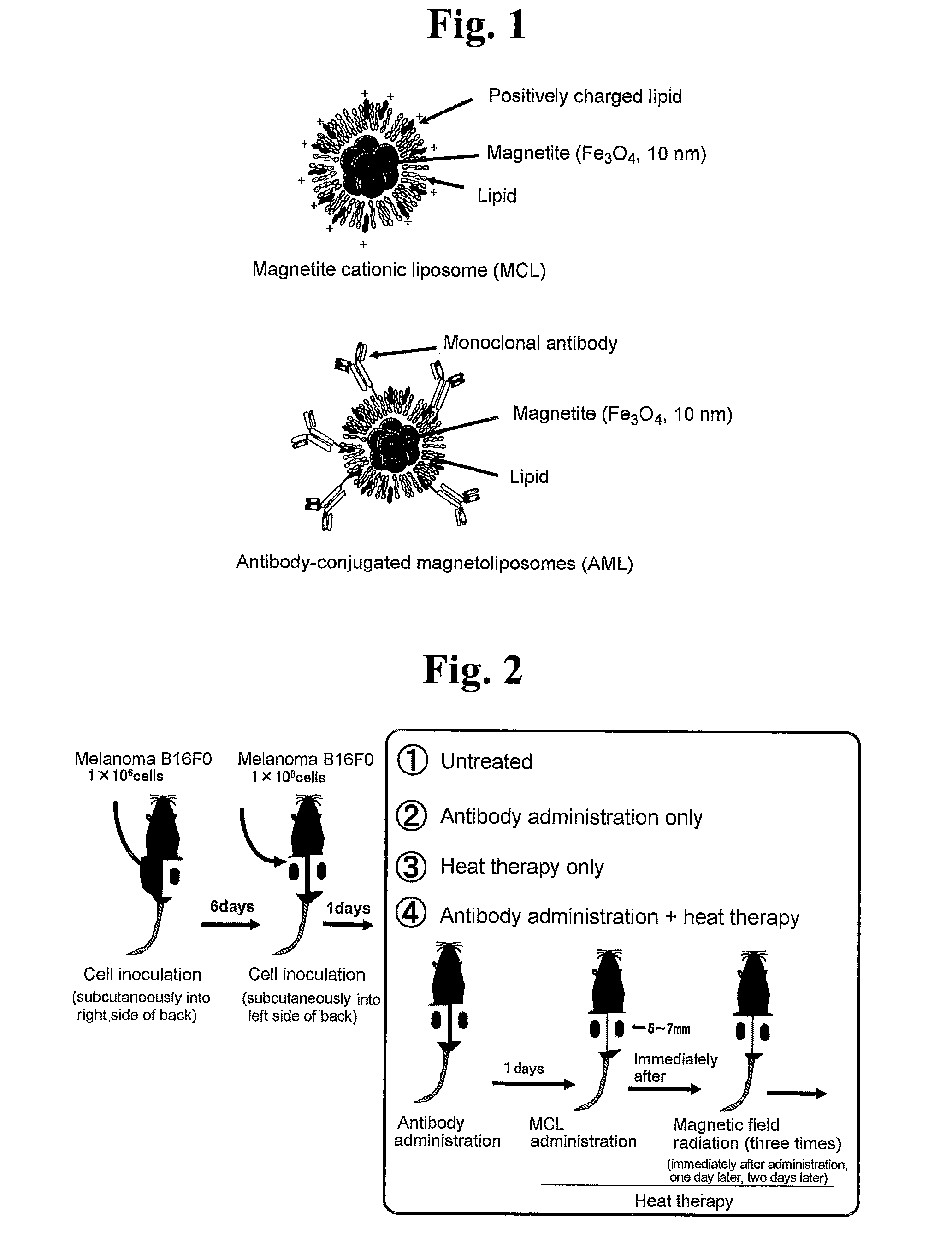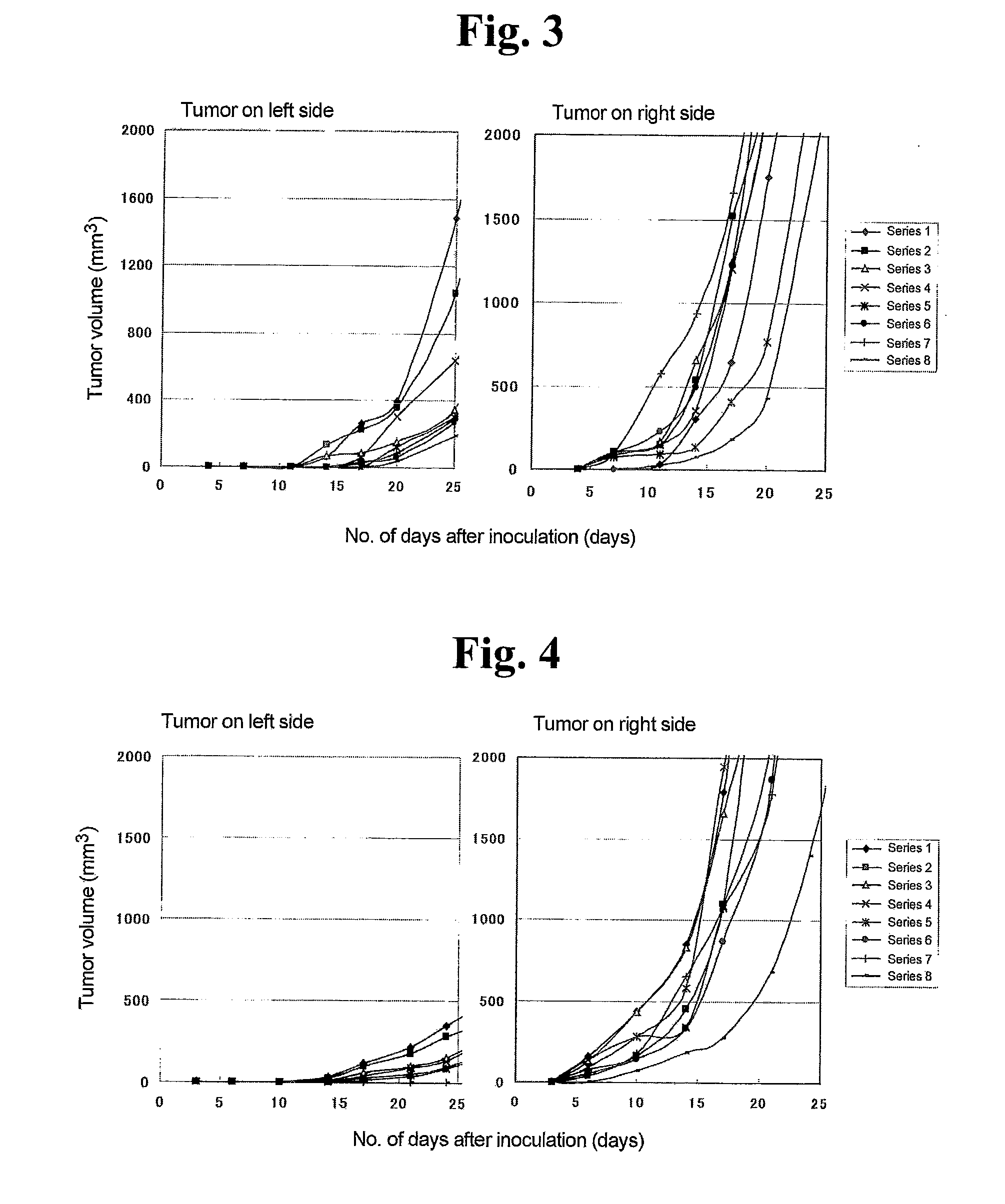Malignant tumor heat therapy kit comprising Anti-regulatory t cell antibody and magnetic fine particles and heat therapy method thereof
a technology for malignant tumors and heat therapy kits, which is applied in the field of malignant tumor heat therapy kits comprising anti-regulatory t cell antibodies and magnetic fine particles, can solve the problems of difficult to achieve complete regression for other cancerous cells, and achieve the effect of enhancing systemic antitumor immunity
- Summary
- Abstract
- Description
- Claims
- Application Information
AI Technical Summary
Benefits of technology
Problems solved by technology
Method used
Image
Examples
example 1
Production of MCL
[0029]9 mg of dilauroylphosphatidylcholine (Sigma), 9 mg of dioleoylphosphatidyl ethanolamine (Sigma) and 4.5 mg of N-(a-trimethylammonioacetyl)didodecyl-D-glutamate chloride (Sogo Pharmaceutical) were dissolved in 3 ml of chloroform followed by drying under reduced pressure with an evaporator to produce a lipid film on the inner walls of a recovery flask. A 20 mg / 2 ml magnetite solution (Toda Kogyo) was added thereto followed by treating with a vortex mixer for about 10 minutes until the lipid film separated from the inner walls of the flask. Ultrasonic treatment for 1 minute and standing over ice for 30 seconds were then repeated until ultrasonic treatment time reached to a total of 1 hour. Then, after adjusting the pH to 7.0 with phosphate buffered saline (PBS), centrifugal separation was carried out for 50 minutes at 10,000 G and 4° C. to recover the MCL as a precipitate followed by suspending in ultrapure water.
example 2
Purification of Regulatory T Cell Antibody
[0030]Hybridoma cells of mouse CTLA4 antibody (American Type Culture Collection (ATCC) Number HB-304) were cultured and the culture broth was centrifuged for 10 minutes at 130 G and 4° C. The resulting supernatant again centrifuged for 15 minutes at 10,000 G and 4° C. followed by collection of the supernatant. This supernatant was then cooled with ice and then dissolved by gradually adding 27.7 g of ammonium sulfate per 100 ml while stirring followed by allowing to stand for 1 hour. This was then centrifuged for 5 minutes at 10,000 G and 4° C., and after dissolving the resulting precipitate with about 0.8 to 1.2 ml of sodium phosphate buffer, the solution was dialyzed for 2 hours against the sodium phosphate buffer using a dialysis membrane having a cutoff at a molecular weight of 10,000. Following completion of dialysis, the dialysate was centrifuged for 15 minutes at 10,000 G and 4° C. to obtain a supernatant.
[0031]Next, purification was c...
example 3
Animal Testing Model
[0033]A model experimental system was produced for the purpose of achieving regression of a cancerous lesion on which heat therapy had not been carried out more effectively by inducing systemic tumor immunity in malignant tumor heat therapy.
[0034]Mouse malignant melanoma cells B16F0 (American Type Culture Collection (ATCC) Number CRL-6322) were cultured at 37° C. in the presence of 5% CO2. After washing the culture dish twice with PBS, the culture dish was treated with trypsin (0.125%) solution. Following treatment, medium was added and the cells were suspended by pipetting followed by centrifuging for 10 minutes at 1,200 rpm and 4° C. to collect the cells. After washing twice with PBS, the cell concentration was adjusted to 1.0×106 cells / 100 μl. 100 μl of this cell suspension were transplanted subcutaneously into the right side of the backs of a C57BL / 6J mice (Nippon Clea, age 7 weeks, females) using a syringe needle (29 gauge×½″). The same cells were transplant...
PUM
 Login to View More
Login to View More Abstract
Description
Claims
Application Information
 Login to View More
Login to View More - R&D
- Intellectual Property
- Life Sciences
- Materials
- Tech Scout
- Unparalleled Data Quality
- Higher Quality Content
- 60% Fewer Hallucinations
Browse by: Latest US Patents, China's latest patents, Technical Efficacy Thesaurus, Application Domain, Technology Topic, Popular Technical Reports.
© 2025 PatSnap. All rights reserved.Legal|Privacy policy|Modern Slavery Act Transparency Statement|Sitemap|About US| Contact US: help@patsnap.com



